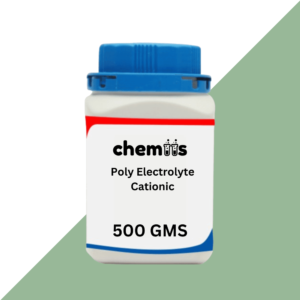Thiosemicarbazide is a sulfur-containing organic compound widely used in the chemical, pharmaceutical, and analytical industries. It serves as a critical reagent in the synthesis of heterocyclic compounds, pharmaceuticals, and as an intermediate for various industrial processes. Its unique chemical structure enables it to react with ketones and aldehydes, forming hydrazones and thiosemicarbazones, which are valuable intermediates in drug development and material science.
Applications of Thiosemicarbazide
1. Chemical Synthesis:
- Synthesis of Heterocyclic Compounds:
Thiosemicarbazide is widely used in synthesizing heterocyclic structures like thiosemicarbazones and thiadiazoles, which are critical intermediates in material science and drug discovery. - Ligand Formation in Coordination Chemistry:
Serves as a ligand in the synthesis of metal complexes used in catalysis and material research.
2. Pharmaceutical Applications:
- Intermediate for Drug Development:
- Thiosemicarbazones derived from Thiosemicarbazide exhibit antimicrobial, antiviral, and anticancer properties.
- It is used in synthesizing drugs for tuberculosis and other infectious diseases.
- Research in Antioxidant Properties:
Its derivatives are studied for their potential as antioxidants in various therapeutic applications.
3. Analytical Chemistry:
- Detection of Metal Ions:
Used as a reagent to detect and quantify metal ions in solution through the formation of colored complexes. - Reagent in Titration:
Plays a role in analytical methods for studying ketones and aldehydes in chemical samples.
4. Material Science:
- Polymer Synthesis:
Used in the synthesis of specialty polymers with unique thermal and mechanical properties.
5. Industrial Applications:
- Textile and Dye Industry:
Thiosemicarbazide is employed as a precursor in the production of dyes and textile finishing agents. - Agrochemical Production:
Utilized in synthesizing agricultural chemicals, including fungicides and pesticides.
Safety Guidelines for Handling Thiosemicarbazide
Thiosemicarbazide is classified as a potentially hazardous material and requires proper safety precautions during handling to avoid health risks.
1. General Handling Precautions:
- Personal Protective Equipment (PPE):
- Use gloves, goggles, and a lab coat to prevent direct contact.
- In poorly ventilated areas, wear a respirator to minimize inhalation risk.
- Work Environment:
Perform operations in a fume hood or a well-ventilated area to avoid inhaling dust or vapors.
2. Storage Guidelines:
- Cool, Dry Conditions:
Store in a tightly sealed container in a dry, cool place away from moisture and incompatible substances. - Proper Labeling:
Clearly label storage containers to prevent accidental misuse.
3. First Aid Measures:
- Eye Contact:
Flush eyes with water for at least 15 minutes and seek medical attention if irritation persists. - Skin Contact:
Wash skin thoroughly with soap and water. Remove contaminated clothing and wash before reuse. - Inhalation:
Move the individual to fresh air. If symptoms like dizziness or respiratory irritation occur, seek medical assistance immediately. - Ingestion:
Rinse mouth thoroughly with water and get medical help. Do not induce vomiting unless directed by a medical professional.
4. Spill and Waste Disposal:
- Containment:
- Sweep up spills carefully, avoiding dust formation.
- Dispose of in accordance with local and national environmental regulations.
- Disposal:
Dispose of waste materials in compliance with chemical waste management protocols to prevent environmental contamination.







Harshit Reddy (verified owner) –
Amazing value for money.
Nandini Kaul (verified owner) –
Professional service.
Ayesha Rizvi (verified owner) –
Excellent online store.
Ankur Tyagi (verified owner) –
Website is easy to navigate.
Nandini Kaul (verified owner) –
Satisfied with the results.
Jayant Mishra (verified owner) –
Crystal clear instructions.
Lavanya Jain (verified owner) –
Just as expected.
Arjun Reddy (verified owner) –
Genuine products.
Suraj Barman (verified owner) –
Reliable chemical supplier.
Harsh Vardhan (verified owner) –
No complaints at all.